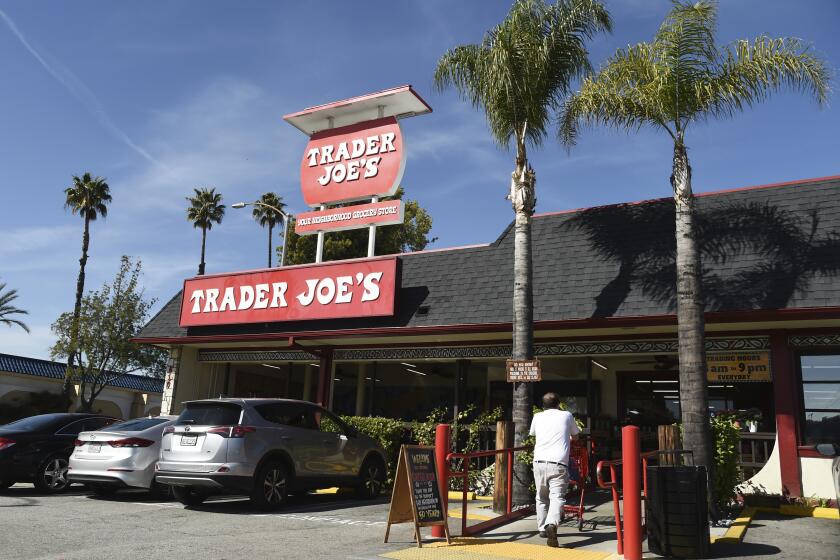Editorial: L.A. can begin to solve its affordable housing crisis in 2021

Los Angeles leaders like to tout their progressive credentials, but when it comes to housing and land use, the city is stuck in the past — clinging to development patterns born out of racist housing policies from the last century that perpetuate segregation and inequality today.
But like all California cities, L.A. faces increasing pressure from activists, constituents and the state to reform its land-use laws to make it easier to build more housing, especially affordable housing, in communities that have long resisted density and development.
That’s one reason more cities around the state, including Sacramento and Berkeley, are considering ending single-family zoning and instead allowing up to four apartments on lots once reserved for a single house.
Los Angeles City Council President Nury Martinez had floated the idea of putting a measure on the ballot to update L.A.’s zoning rules. But the council and Mayor Eric Garcetti don’t have to wait for an election. They have a rare opportunity right now to repair the city’s broken, unjust land-use and development system.
By October, L.A. has to complete a new Housing Element — a state-mandated plan showing how the city intends to meet its housing needs for the next eight years. The plan will include policies to help boost housing construction, reduce homelessness and protect tenants at risk of displacement. Perhaps more important, it must identify properties that could be developed for 455,000 new units of housing, including nearly 185,000 units for lower-income residents. That’s five times the number of new homes that the city had to plan for during the last Housing Element period from 2012 to 2019. Then the city has to rezone properties to accommodate the housing.
Given the huge increase in units that L.A. needs to plan for, the decisions leaders make this year on where to put these new homes will shape how the city grows over the coming decade — and determine whether Los Angeles can become a less segregated, more affordable and sustainable city.
That’s why it’s so worrisome that the Housing Element under development isn’t breaking new ground, at least not yet. The initial study from the city Planning Department suggests no major zoning or policy alterations. It simply reinforces the status quo, which is exactly how L.A. ended up with a staggering shortage of housing, particularly for lower-income Angelenos.
That’s a problem. There’s no way L.A. can usher in half a million new homes when apartment complexes and townhomes are banned in single-family zones, which make up 75% of the city’s residential property.
Nor can the city promote fair housing — as required by state law — if new affordable housing is concentrated in low-income communities. For the first time, Housing Element plans have to analyze housing inequality and try to reduce segregation and lack of opportunities in Black, Latino and lower-income communities. That means cities have to zone for more affordable housing in high-opportunity communities that have lots of jobs, good schools, transit stops, parks and other amenities. And if a city is going to put affordable housing developments in low-income communities, there has to be an accompanying investment in infrastructure, schools and services that help lift up those neighborhoods.
Almost half of the new housing built in L.A. between 2012 to 2019 was located in lower-income communities, according to an analysis by a coalition of housing, social justice and environmental groups. But about 90% of the new homes built during that period were unaffordable to working-class Angelenos. No wonder so many renters and neighborhoods are concerned about gentrification and displacement. Much of the development is happening in poorer neighborhoods, but the homes are priced for wealthier households.
And there’s another problem: By continuing to push most new housing development onto lots already zoned for multifamily housing, that creates an incentive to demolish older, more affordable properties and replace them with bigger, typically more expensive apartment buildings. That can force longtime renters out of their neighborhoods.
The Housing Element is the means by which L.A. leaders can enact more equitable development policies. The City Council and Garcetti could direct new development toward affluent, high-opportunity communities that have been traditionally closed to denser, more affordable housing. They could allow small apartment buildings, townhomes and bungalow courts in single-family neighborhoods. They could adopt tenant protections and discourage redevelopment of rent-stabilized apartments. They could incentivize developers to include more affordable units in their new buildings. They could streamline permitting so it’s easier and cheaper to build much-needed homes for all income levels.
It shouldn’t take state intervention to force L.A. to do what’s desperately needed. The city’s crushing shortage of affordable housing is on display daily in the tents and RVs lining the streets. The Housing Element is the perfect opportunity for Garcetti and the City Council to make L.A.’s housing and land-use policies match their progressive rhetoric.










